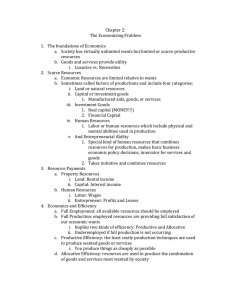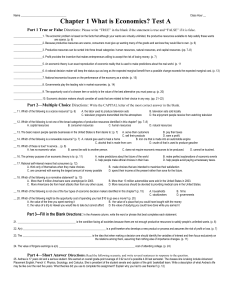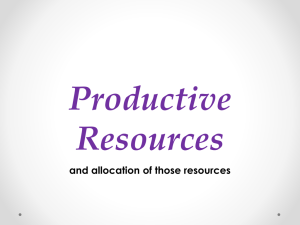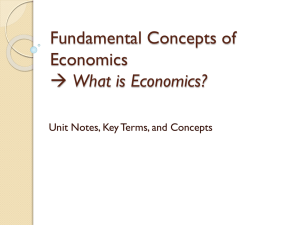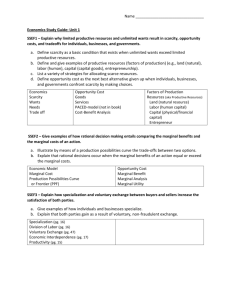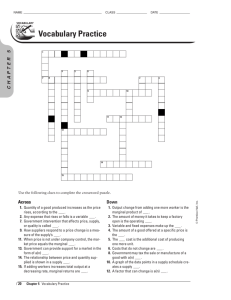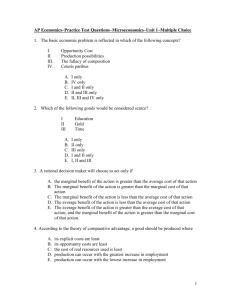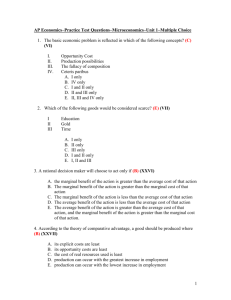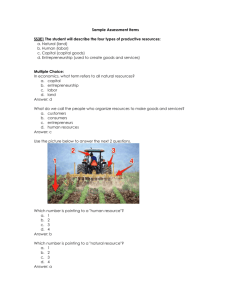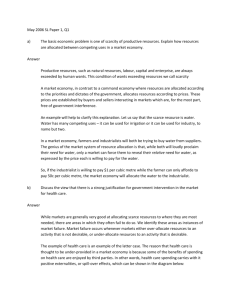Productive Resources
advertisement
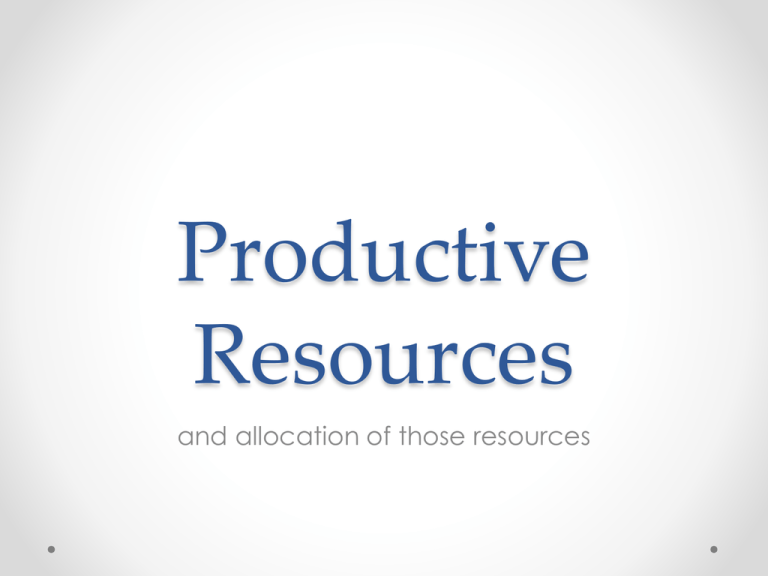
Productive Resources and allocation of those resources Standards • SSEF1b: Define and give examples of productive resources • SSEF1c: List a variety of strategies for allocating scarce resources Two terms, Same meaning Productive Resources = Factors of Production The Factors of Production/Productive Resources are considered “Scarce Resources”. Unlimited wants & Limited Resources What are Productive Resources? Anything used to produce goods and services There are 4 types of Productive Resources. We call them the “Factors of Production” Or FOP’s Factors of Production 1. Land – o o • “Gifts of nature” Anything that occurs naturally Examples: Factors of Production 2. Labor – o the physical abilities and time of human beings available to produce goods and services. Factors of Production 3. Capital – o the tools, machines, and skills/knowledge/training of human beings. • Physical Capital – tools, machines, etc. • Human Capital – skills, knowledge, and/or training of individuals. Factors of Production 4. Entrepreneurship – o someone who takes a risk to start a business by bringing together the other three factors of production in an innovative way. Need a way to remember? Land, Labor, Capital, Entrepreneurship Just use your CELL (NOT that one!) • • • • Capital Entrepreneurship Land Labor Now that we have productive resources…. What do we do with them? Allocating Scarce Resources • Society has to decide how to allocate its scarce resources. Allocate: To distribute according to a plan Allocation Strategies Supply and Demand Authority • Rationing of a resource based on who can afford the price set by the market. • A person or a group of people in power can make and implement a decision quickly. • More supply = Lower price • Less supply = Higher Price • Authoritarian governments decide how to distribute resources and enforces the decision through military/police power Allocation Strategies Random Selection (Lottery) • This gives everyone who wants the resource equal odds of receiving it. • This strategy can be inefficient because it may allocate the resource to a purpose or person who does not need it or know how to produce using it. (Ex: Farm land First come, First Served • People receive a resource if they are the first one in line for it. • Concerts • Sporting events • Stores Allocation Strategies Personal Characteristic • Resources are distributed based on need or merit. • Scholarships • Jobs Contest • Resource go to the person who wins. • Race • Academics (valedictorian) • Test of knowledge Thinking on the Margin • In economics the term marginal = additional • Resources are allocated by weighing the additional benefit vs. the additional cost. • This is called MARGINAL ANALYSIS Marginal Cost v. Marginal Benefit • People make decisions based on costs and benefits • The benefits must equal or outweigh the costs. • Rational Decision Making takes place when marginal benefits equal or exceed marginal cost. RDM = MB > MC Given the following assumptions, make a rational choice in your own self-interest (hold everything else constant)… 1. You want to visit your friend for the weekend 2. You work every weekday earning $100 per day 3. You have three flights to choose from: Thursday Night Flight = $300 Friday Early Morning Flight = $345 Friday Night Flight = $380 Which flight should you choose? Why? 17
